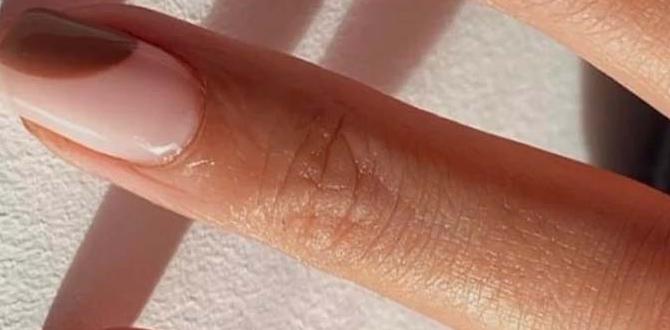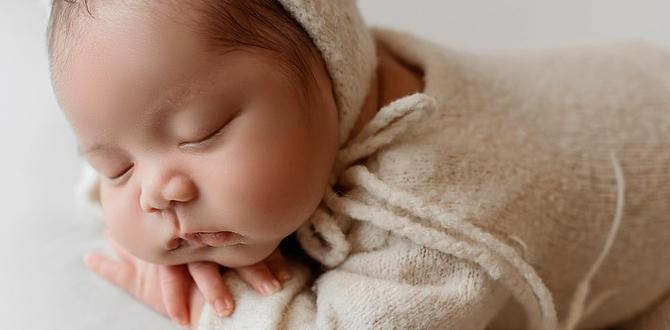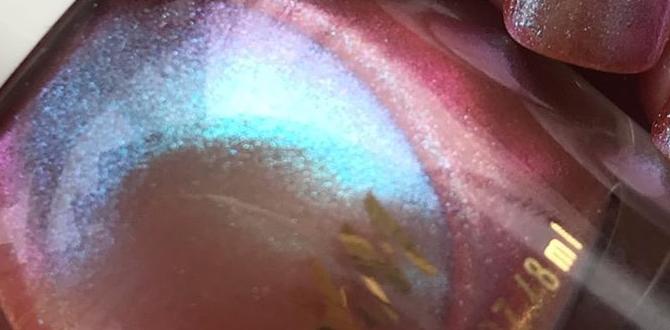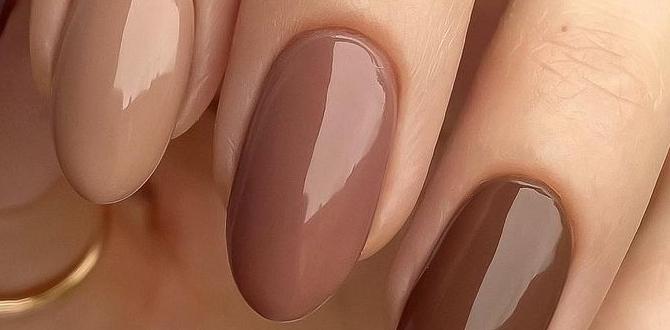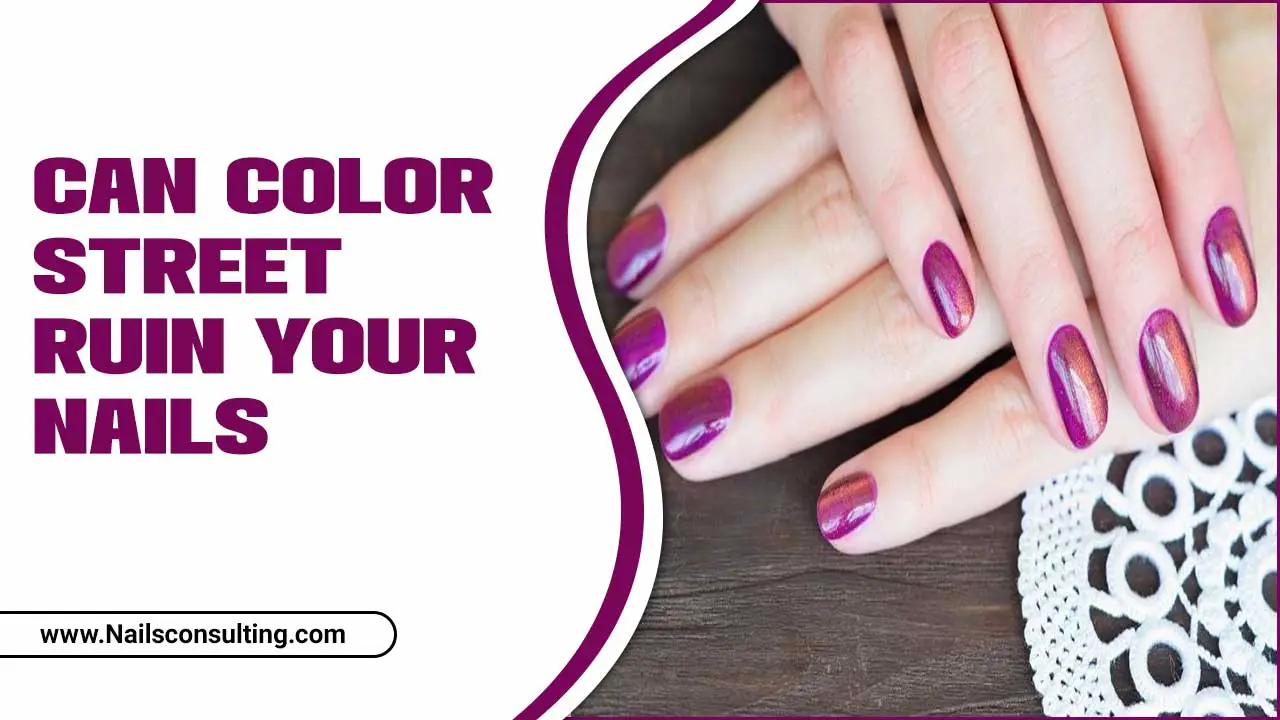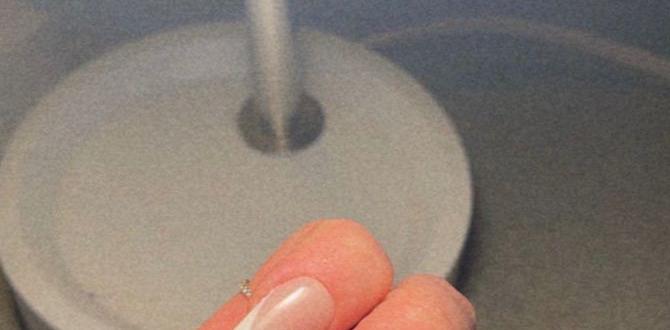Want perfect nail designs? Start with the right tools and a little prep! Gather your essential nail art kit, prep your nails properly, and practice simple techniques. This guide breaks down everything you need to create salon-worthy nail art right at home, making stunning manicures achievable for everyone.
Dreaming of intricate nail art but feeling a little intimidated? You’re not alone! Many of us scroll through gorgeous nail designs online and think, “I could never do that.” But what if I told you that achieving beautiful, eye-catching nail designs at home is totally dentro reach? It’s all about having the right mindset and a few genius essentials. We’re going to dive into the simple steps and must-have tools that will transform your DIY manicures from basic to brilliant. Get ready to unleash your inner nail artist and make your fingertips your favorite canvas!
Your Nail Art Toolkit: The Genius Essentials
Starting your nail design journey doesn’t require a whole professional salon in your bathroom. A few key items will set you up for success. Think of these as your trusty sidekicks for creating amazing nail art. Let’s break down what you really need to get started and why each item is important.
Must-Have Nail Polish Products
The foundation of any great nail design is, of course, nail polish! But not all polishes are created equal when it comes to art. You’ll want a mix to achieve different looks.
- Base Coat: This is your prep hero! A good base coat protects your natural nails from staining from darker polishes and helps your color last longer. Plus, it creates a smooth surface for your designs.
- Top Coat: The finisher! A quality top coat seals your design, adds brilliant shine, and prevents chips. Look for a quick-drying or gel-like finish for that professional polish.
- Opaque Colors: You’ll need a few solid, opaque polishes in colors you love. These are your main canvas colors.
- Sheer or Jelly Polishes: Great for water marbling, gradient effects, or adding a subtle translucent layer.
- Glitter Polishes: Instant pizzazz! Perfect for accent nails, full coverage sparkle, or specific glitter art techniques.
- Matte Top Coat: For a sophisticated, modern twist on any color or design. Apply it over your finished art for a velvety look.
Specialty Nail Art Polishes & Gels
Once you have the basics, you might want to explore some polishes designed specifically for art:
- Striping Polishes: These come with a fine brush for drawing thin, precise lines.
- Nail Art Pens: Like markers for your nails! Easy to use for simple dots, lines, and patterns, especially for beginners.
- Chrome Powder/Holographic Flakes: Applied over a tacky gel or polish, these create stunning metallic or iridescent effects that are super on-trend.
Essential Nail Art Tools
These are the tools that bring your designs to life. Don’t worry if you don’t have them all at once; start with a few and build your collection!
- Dotting Tools: These have small metal balls of various sizes on the end of handles. They’re perfect for creating dots, flowers, swirls, and symmetrical designs. A set with different sizes is incredibly versatile.
- Fine-Tipped Brushes: You’ll want a few brushes with fine synthetic bristles. Different sizes are useful for drawing thin lines, filling in small areas, and creating delicate details. Many nail art kits include these.
- Striping Tape: Thin, adhesive tape you can place on your nail to create sharp, geometric lines and patterns. You paint over it and peel it off to reveal the crisp design underneath.
- Dotting Pen/Ball Stylus: Similar to dotting tools, but often with a single, larger ball. Great for bigger dots or blending.
- Tweezers: Handy for picking up small nail art embellishments like rhinestones, glitter, or small stickers.
- Nail Art Stamper & Plates (Optional for Beginners): This is a creative way to transfer intricate designs from metal plates onto your nails using a stamper. It’s a bit more advanced but offers amazing results.
- Clean-up Brush: A small, flat-topped brush, often angled, that you dip in nail polish remover to clean up any polish that gets on your cuticles or skin. This is KEY for a professional finish!
Tools for Nail Prep and Application
Before you even think about art, your nails themselves need to be prepped. This step is crucial for a flawless finish and long-lasting designs.
- Nail File and Buffer: Essential for shaping your nails and smoothing out any ridges for a perfect base. A fine-grit buffer is great for creating a super smooth surface.
- Cuticle Pusher/Orange Stick: Gently push back your cuticles to give you a clean canvas to work on.
- Nail Polish Remover: For corrections and cleaning up mistakes.
- Lint-Free Wipes: These are important for wiping nails clean without leaving fuzzy bits behind, which can ruin your smooth application.
Nail Prep: The Secret to Flawless Designs
This is where the magic really begins! Properly prepping your nails is the non-negotiable first step to any beautiful manicure, especially when you’re adding designs. It ensures your polish adheres well and your art looks crisp and clean. Think of it as laying the perfect foundation.
Step 1: Clean Slate!
Start by removing any old nail polish. Use a good quality nail polish remover and lint-free wipes to ensure no color residue is left behind. This prevents colors from mixing unexpectedly and keeps your new design pure.
Step 2: Shape Up!
Gently file your nails to your desired shape. Always file in one direction to avoid weakening the nail. A smooth edge will make polish application easier and prevent snags.
Step 3: Buff Away Imperfections
Use a nail buffer to gently smooth out any ridges on your nail surface. This creates a perfectly smooth canvas that polish can adhere to without bumps. Don’t over-buffer, as this can thin your natural nails.
Step 4: Cuticle Care
Apply a little cuticle oil, then use a cuticle pusher or an orange stick to gently push back your cuticles. This tidies up the nail bed and actually makes your nail appear longer, giving you more space for designs.
Step 5: Cleanse and Dry
Wipe your nails with a nail dehydrator or rubbing alcohol on a lint-free wipe. This removes any oils or dust, ensuring your base coat and polish will properly stick. Let your nails dry completely.
Beginner-Friendly Nail Design Techniques
Ready to get creative? These techniques are fantastic starting points for beginners. They’re easy to master and allow you to create stylish looks without needing advanced skills.
1. The Dotting Delight
Dotting tools are your best friend for this simple yet effective technique. You can create everything from cute polka dots to delicate floral patterns.
- Prep Your Nails: Apply your base coat, let it dry, and then apply your main polish color. Let this color dry completely – this is crucial to prevent smudging!
- Load Your Dotting Tool: Dip the tip of your dotting tool (choose a size for your desired dot) into a drop of polish. Don’t overload it.
- Create Your Dots: Gently press the loaded dotting tool onto your nail. Twist slightly as you lift to create a clean dot.
- Design Time: You can create rows of dots, random patterns, or use different sized dots for visual interest. For simple flowers, place a few larger dots in a circle and add a tiny dot in the center.
- Seal the Deal: Once your dots are completely dry, apply a thin layer of top coat to seal your design.
2. The Simple Stripe
Stripes are classic and chic. You can achieve them with striping tape or a fine-tipped brush.
Using Striping Tape:
- Apply Base Colors: Paint your nails with your chosen base colors. Let them dry completely. This is vital to prevent the tape from lifting the polish.
- Place the Tape: Carefully apply strips of nail art striping tape across your nail. Press down firmly to ensure a good seal.
- Paint Over: Apply another color of polish over the tape. A thin layer is best.
- Peel with Care: While the polish is still slightly wet (but not gummy), use tweezers to carefully peel away the striping tape.
- Seal It: Once dry, apply your top coat.
Using a Fine-Tipped Brush:
- Apply Base Color: Paint your nail and let it dry thoroughly.
- Load Your Brush: Dip the tip of your fine brush into a different color polish. Wipe off excess on a paper towel.
- Draw Your Lines: Gently draw thin, steady lines across your nail. For straighter lines, hold your breath and move your hand smoothly.
- Try Different Angles: Experiment with horizontal, vertical, and diagonal stripes.
- Top Coat: Apply a top coat once the polish is dry.
3. The Gradient (Ombre) Effect
This technique looks complex but is surprisingly easy to achieve with a makeup sponge!
- Paint Base Color: Apply your lightest color to the nail and let it dry. Apply a white polish for a brighter effect if desired.
- Prepare the Sponge: Cut a makeup sponge into a small wedge. You can also use a dedicated nail art sponge.
- Apply Polishes to Sponge: Apply stripes of two or three colors side-by-side onto the sponge. The colors should blend where they meet.
- Dab onto Nail: Gently dab the sponge onto your nail, pressing lightly to transfer the gradient of colors. Re-apply polish to the sponge and dab again if needed to build up color vibrancy.
- Clean Up: Use your clean-up brush with a tiny bit of nail polish remover to tidy the edges around your cuticle.
- Seal: Apply a generous layer of top coat to smooth out the sponged texture and meld the colors together.
4. Easy Stamping Designs
Nail stamping plates allow you to transfer intricate designs easily. While it takes a little practice, it’s a game-changer for complex patterns. You can find great starter kits online, for example, from brands like Moyou London, a popular name in the stamping community.
- Apply Base Polish: Paint your nail a solid color and let it dry completely.
- Pick Your Plate & Design: Choose a stamping plate and the design you want to use.
- Apply Stamping Polish: Apply a thick layer of opaque stamping polish over the etched design on the plate.
- Scrape Away Excess: Immediately use a stamper scraper (or an old credit card) at a 45-degree angle to scrape off the excess polish. Work quickly!
- Roll the Stamper: Gently roll the stamper head over the design to pick it up.
- Transfer to Nail: Immediately roll the stamper onto your nail. A gentle rolling motion is key.
- Clean and Seal: Clean up any smudges with your clean-up brush and follow with a top coat. Be careful not to smudge the stamped design when applying the top coat; use a light hand.
Advanced Techniques to Explore (Once You’re Comfortable!)
As you gain confidence with the basics, you might want to try these techniques that offer a bit more flair. They still rely on genius essentials and a bit of practice!
1. Watercolor Blends
This creates a soft, artistic wash of color. You’ll need a creamy white polish, sheer colored polishes, and a bit of patience.
- Base: Apply a creamy white polish and let it dry.
- Apply Sheer Colors: Using a brush dipped in a sheer color (diluted with a tiny bit of clear polish or alcohol if it’s too opaque), dab and blend onto the white base. Work in sections.
- Blend: Use a clean, slightly damp brush to blend the edges of the colored washes, creating a watercolor effect.
- Add Details: Once dry, you can add fine lines or dots with a striping brush.
- Seal: Apply a top coat.
2. Chrome & Mirror Effect
These powders create a stunning, high-shine finish. It’s usually best achieved with gel polish for longevity, but can be done with regular polish if sealed carefully.
- Base: Apply your base color polish and let it dry. For gel, cure it according to instructions.
- Apply Chrome Powder: Using a silicone tool or your fingertip, gently rub the chrome powder over the nail until it achieves a uniform, reflective shine. This works best on a tacky, uncured gel layer or a very specific, specially formulated chrome application coat for regular polish.
- Brush Off Excess: Gently brush away any loose powder.
- Seal: Apply a clear top coat, being careful not to drag the powder. For gels, a no-wipe top coat is ideal here.
3. 3D Embellishments
Adding rhinestones, studs, or charms can elevate simple designs.
- Placement: Apply your base color and let it dry thoroughly.
- Adhere: Place a tiny dot of strong nail glue or thick top coat where you want your embellishment.
- Apply: Use tweezers to carefully place your rhinestone or charm.
- Secure: For regular polish, gently brush extra top coat around the edges of the embellishment without covering it completely. For gel, encapsulate with a top coat, leaving the very top of the embellishment exposed if it’s faceted and you want the sparkle.
Essential Nail Care for Design Longevity
Perfect nail designs don’t just rely on artistry; they also need a healthy foundation and good care to keep them looking fabulous!
- Hydrate Your Cuticles: Dry cuticles can peel and look messy, detracting from your art. Use cuticle oil daily, especially overnight.
- Wear Gloves for Chores: Water and harsh chemicals are the enemy of nail polish and designs. Always wear gloves when doing dishes, cleaning, or gardening.
- Be Gentle: Avoid using your nails as tools to open things or scrape surfaces. This is a sure way to chip your beautiful designs.
- Reapply Top Coat: Every 2-3 days, add another thin layer of top coat to refresh the shine and add an extra layer of protection.
- Moisturize Your Hands: Keeping your hands well-moisturized makes your whole manicure look better.
Troubleshooting Common Nail Design Issues
Even with the best tools, sometimes things go awry. Here are solutions to common problems:
- Smudged Polish: If you smudge slightly, don’t despair! You can sometimes fix it by gently dabbing the area with your finger or a clean-up brush dipped in polish remover to smooth it out. For bigger smudges, it might mean starting that nail over. Always ensure your layers are completely dry before touching.
- Bubbles in Polish: This can happen if the polish is applied too thickly or if the bottle was shaken too vigorously. Try applying thinner coats and letting each dry. If you see a bubble, you can sometimes gently press it down with a clean finger to flatten it.
- Uneven Lines: Practice makes perfect! For straighter lines, try using striping tape, nail art pens, or resting your pinky finger on the table for stability while painting.
- Nail Polish Not Sticking: Ensure your nails are clean and free of oils. A good base coat is essential. If using gel, make sure it’s cured properly according to the manufacturer’s instructions. The Centers for Disease Control and Prevention (CDC) offers important guidance on infection control that can also apply to nail hygiene for preventing issues.
- Designs Lifting at Edges: This often happens with top coat. Apply your top coat in thin layers and cap the free edge of your nail for a better seal.
Frequently Asked Questions (FAQ)
Q1: What are the absolute must-have tools for a beginner nail artist?
For beginners, the essentials are a good base coat, a shiny top coat, a few opaque polish colors, dotting tools

